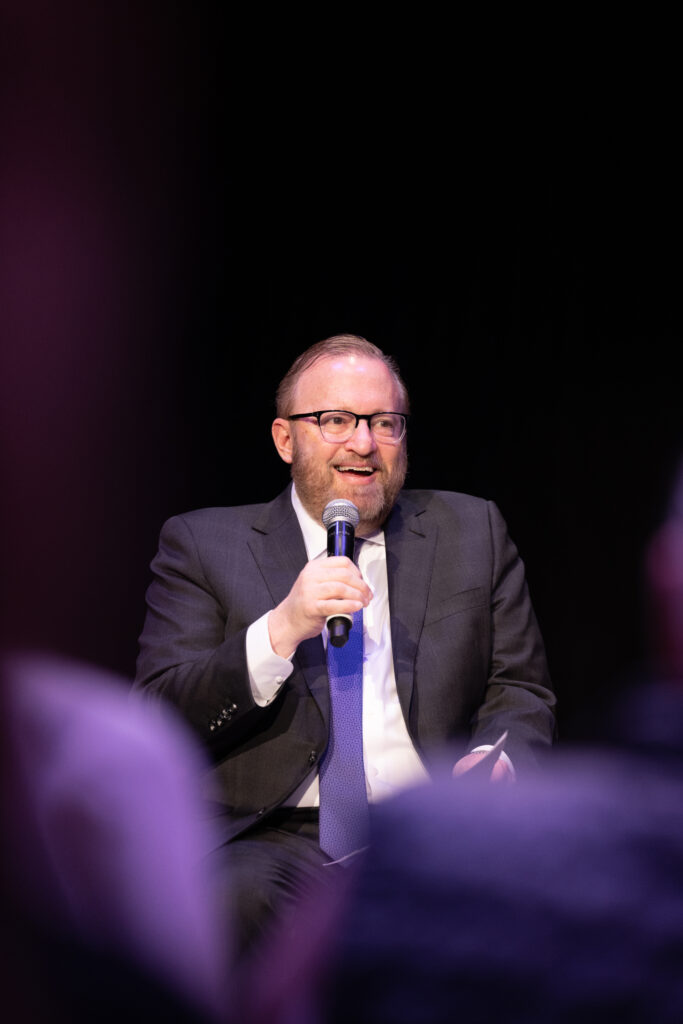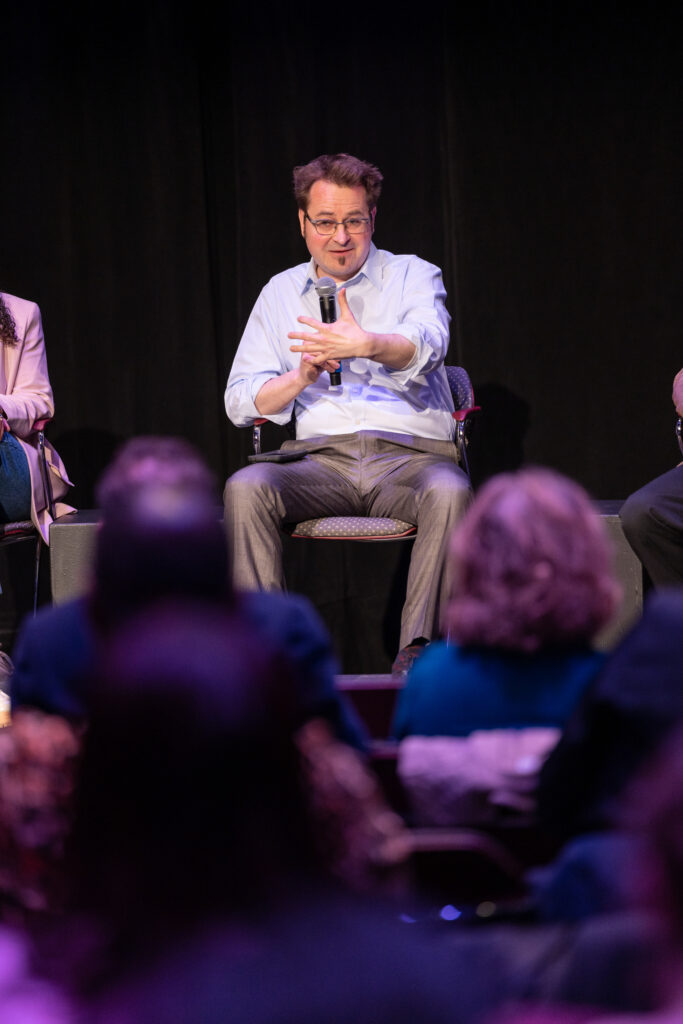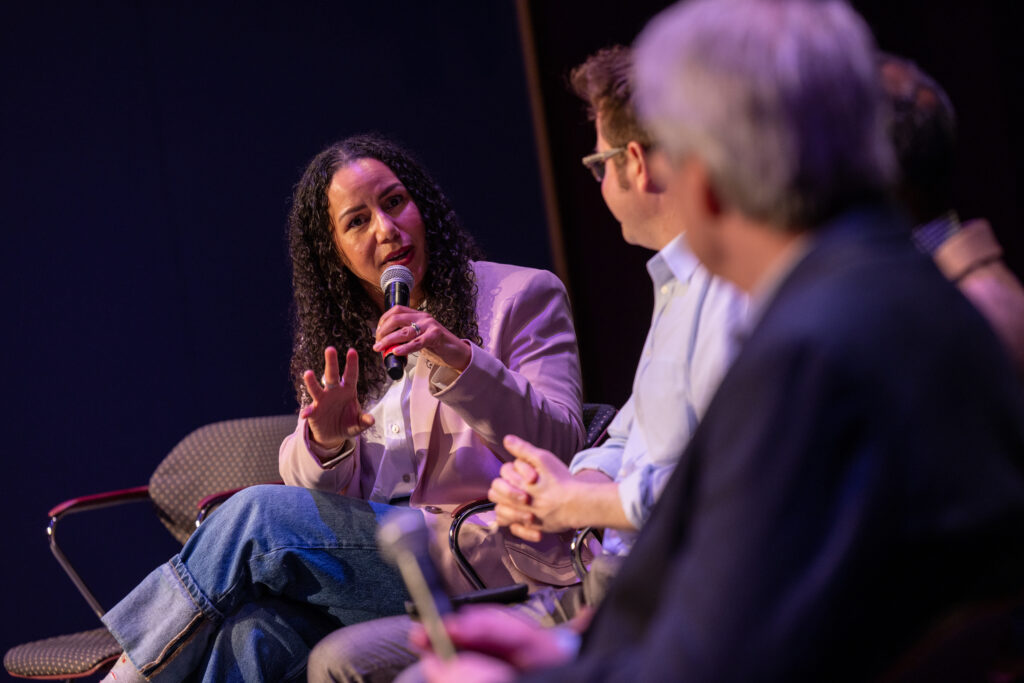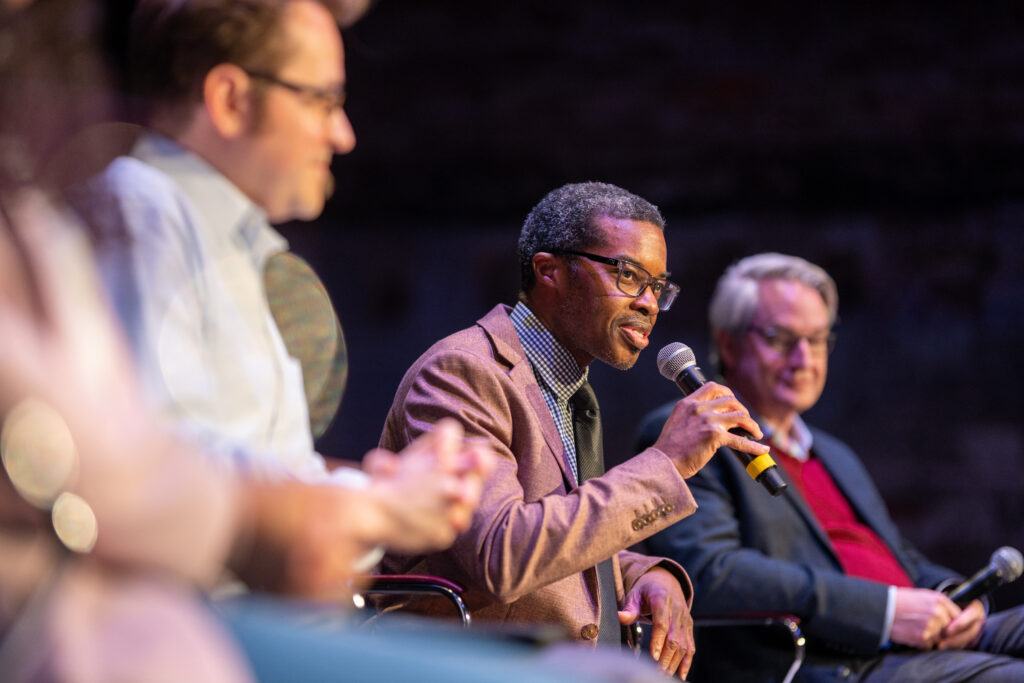Harnessing AI Skills for Communications and Arts Industries
Emerson College President Jay Bernhardt remembers when his father bought an Apple II, one of the first personal computers. That was pre-floppy disk days, and he spent a lot of time playing games like Lemonade Stand.

“Now there’s generative AI, it’s like the reinvention of the wheel,” said Bernhardt before a panel in the Jackie Liebergott Black Box Theatre on Thursday about artificial intelligence’s impact on the communications and arts industries.
“I don’t believe that AI will take over the jobs that our students obtain after graduation, but it’s clear that it will become a part of what they need to know to be successful,” added Bernhardt.
Assistant Provost of Faculty Affairs Brooke Knight hosted the panel, which included WLP Assistant Professor Kyanna Sutton; School of Communication Dean Brent Smith; and Marlboro Institute Associate Professor Russ Newman. Each one brought their personal and professional experience with AI to the discussion.
The panel is one of the numerous events celebrating Bernardt’s inauguration as the College’s 13th president.
Read: Poe-Themed Southwick Recital Kicks off Inauguration Celebration

Knight said the panelists are part of a president’s working group on AI, and there’s also an AI interest group that’s open to the community. He said the president’s working group is looking at how AI will impact the next five years in terms of academic integrity, AI literacy, and training; the changes on the creative practices in higher education and other industry sectors; and what will AI look like in five to 10 years.
Read: Faculty Tackle Higher Ed, Creative Industries in the Age of AI
“As a group we’re carefully looking to see about the industries into which our graduating students are headed, how those industries are being impacted [by AI], and how to prepare those students for those industries,” said Knight.

Sutton spent the lion’s share of her career as a producer in the digital publishing industry, and has attempted to integrate AI into two undergraduate classes she teaches, including Multimedia Storytelling. She said students in her classes were deeply ideologically opposed to using AI.
“They consider it a tool of plagiarism, and that it crowdsources intellectual property. Both classes asked me if it’s mandatory to use AI [in their assignments], and if they could opt out,” said Sutton. “It suggests there’s a conscientiousness. That doesn’t mean we put our heads in the sand about the technology and the acceleration of the technology.”
Newman said some people thought AI tools such as ChatGPT would be used as a shortcut, but that isn’t the case. He said society is in the process of learning what can and can’t be done with AI tools.
“Some might view the tools as partial truth. These tools are all mirrors upon what they’ve been trained upon,” said Newman.

Smith discussed two ways a Business and Creative Enterprises student could use AI. First, to create a financial trajectory for a business, and second, to be proactive about a crisis communications issue.
“What would AI recommend for crisis communications through social listening? If you said, ‘Let me know every morning about the making of a crisis around my personal brand,’” said Smith. “How might it emerge? When would it emerge? Who will it affect? And how do I rally a message around my personal brand?”
Knight proposed a question on everyone’s minds: How can Emerson lead in the AI space to take leadership roles in our industry fields.
Sutton said departments will continue to discuss AI, and that professors are pitching classes that would work hone skills to use AI in fields such as publishing, arts, and entertainment.
Said Sutton, “What are some of the problems, promises and opportunities in the current state of the arts, and how can we leverage AI that educates, trains, and prepares students?”

Smith said he was raised to think “how we work always needs work.” He said he has two elementary school-aged students, and that makes him think about not what technology is doing today, but what it will be doing. He said we should be talking with high school students about their relationships with AI technology.
“I knew more about technology than my professors. They might just be showing us how AI can be used,” said Smith.
Categories